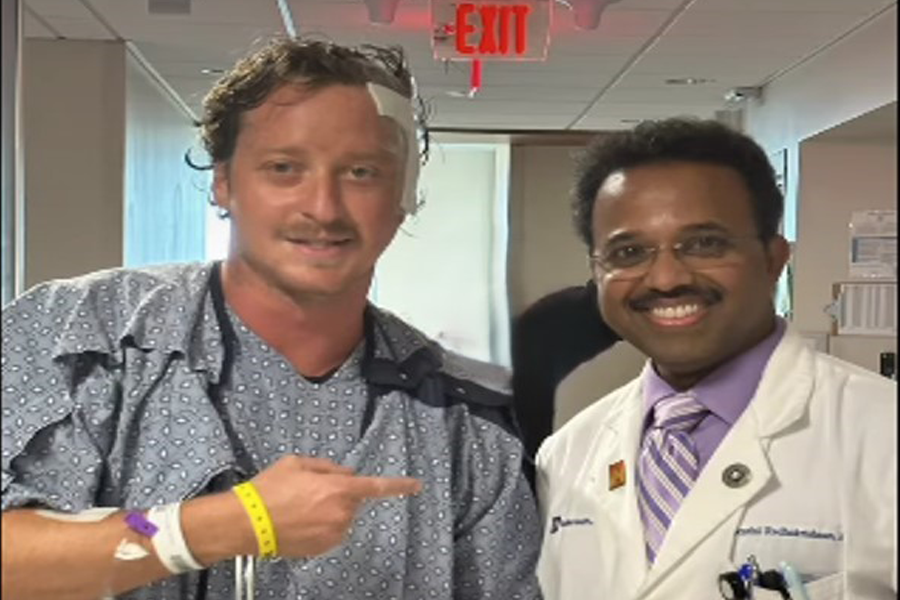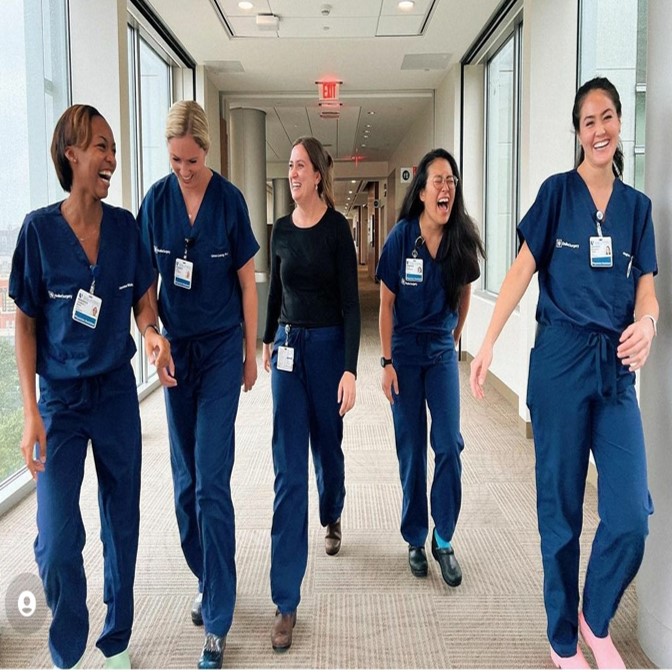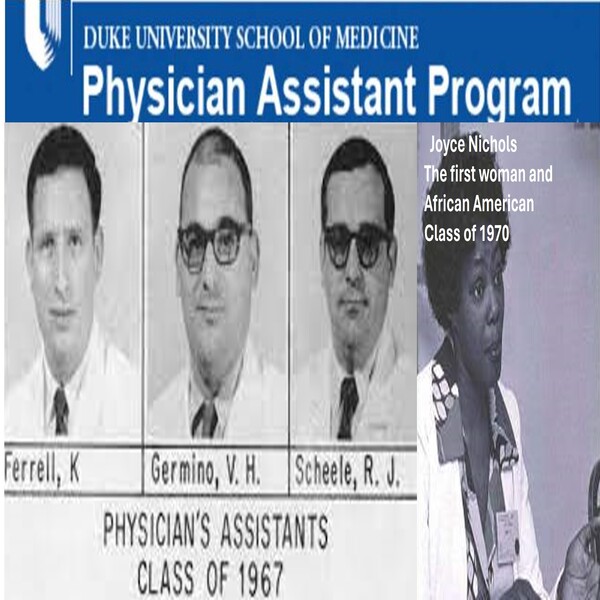What do physician assistants do? The multi-faceted role of physician assistants.
Physician Assistants (PAs) are extensively trained and highly skilled healthcare professionals who play an indispensable role in the contemporary healthcare landscape. They are proficient in providing comprehensive care to patients across all age groups, ranging from neonates to geriatrics. The scope of their practice is extensive and encompasses a broad range of responsibilities, rendering them integral members of the healthcare team. Their multifaceted role includes but is not limited to, diagnostic and therapeutic contributions, patient care responsibilities, education, mentoring, and administration in various healthcare settings. The vital contributions of PAs in healthcare delivery are widely acknowledged, and their expertise is increasingly sought after in diverse medical specialties.
Diagnostic and Therapeutic Contributions
- Conducting thorough patient assessments is a fundamental responsibility of PAs. This process involves obtaining detailed medical histories, performing meticulous physical examinations, and ordering and interpreting essential diagnostic tests. PAs possess a comprehensive understanding of the patient’s medical condition, which enables them to achieve accurate diagnoses and develop effective treatment plans.
The medical history-taking process necessitates gathering the patient’s complete medical and surgical history, current medications, allergies, and family history, among other pertinent information. This data is crucial in determining the patient’s current health status and aids the PA in identifying potential risk factors.
The physical examination is another crucial element of the patient assessment process. PAs conduct comprehensive assessments, evaluating vital signs, skin integrity, and body systems to identify abnormalities and underlying health issues based on patient symptoms. This diagnostic process enables PAs to identify any abnormalities and potential underlying health problems based on the patient’s symptoms. The comprehensive assessment conducted by PAs is essential in ensuring proper diagnosis and treatment of patients.
After the physical examination, PAs may order and interpret diagnostic tests, depending on the patient’s condition. These tests aid in the identification of underlying medical conditions that may not be apparent during the physical exam. PA’s comprehensive understanding of the patient’s medical condition, acquired through the patient assessment process, enables them to make accurate diagnoses and develop effective treatment plans. The patient assessment process is a pivotal aspect of the PA’s role in providing high-quality and efficient care to their patients.
- PAs possess the necessary training and expertise to diagnose and treat a diverse array of medical conditions. Their education, combined with extensive experience, equips them with the ability to formulate differential diagnoses, develop appropriate treatment plans, provide counseling to patients on lifestyle changes that can improve their overall health, and prescribe medications. In a team-based medical model, PAs are uniquely equipped to manage acute and chronic illnesses across all medical specialties and subspecialties, which significantly contributes to patient care.
Given their comprehensive skillset, PAs play a crucial role in the healthcare industry, providing valuable assistance to physicians and other healthcare professionals. Their contributions are particularly noteworthy in the context of a rapidly changing healthcare landscape, characterized by an aging population and a growing demand for medical services.
As such, PAs are a vital component of any modern healthcare system, and their expertise is highly valued by patients, healthcare providers, and policymakers alike.
- PAs perform a variety of medical procedures that are crucial to patient care. Such procedures require a high level of skill and knowledge, which PAs acquire through their rigorous educational and clinical training. They are proficient in their area of specialty, and they have a thorough understanding of the healthcare system in which they operate. The procedures that PAs perform are essential for the diagnosis and treatment of various medical conditions. These procedures may include suturing wounds and lacerations, splinting and casting muscle or tendon strains, ligament sprains, or fractures, administering joint injections, inserting catheters, draining abscesses, performing lumbar punctures, and many other complex bedside procedures for diagnostic and therapeutic purposes.
They work collaboratively with physicians and other healthcare professionals to ensure that patients receive the best possible care. Through their expertise and training, PAs play a vital role in the healthcare system, providing high-quality care to patients in need.
Patient Care Responsibilities
- Keeping true to the need for which the profession was created, many PAs work in primary care settings providing routine and preventive healthcare services. They conduct wellness exams, administer vaccinations, and offer counseling on lifestyle modifications, such as diet and exercise, to promote overall health and prevent diseases.
- In addition to routine healthcare services, PAs are actively involved in managing chronic medical conditions like hypertension, diabetes, asthma, congestive heart failure, and renal failure to name a few. They monitor the patients with frequent examinations and tests, titrate their medications, and counsel patients on lifestyle modifications to optimize patient outcomes and improve quality of life.
- PAs are crucial members of the healthcare team, responsible for triaging and treating patients with acute injuries and medical conditions in urgent care centers, emergency departments, and trauma centers. Their ability to make rapid decisions and initiate treatment can be life-saving in emergencies. PAs possess a unique skill set that allows them to work collaboratively with physicians and other healthcare professionals to provide comprehensive care to patients. As such, PAs are critical to the effective functioning of healthcare systems, particularly in emergency settings where time is of the essence.
- PAs are specialized healthcare professionals who work across multiple medical specialties and subspecialties, including dermatology, cardiology, pulmonology, nephrology, oncology, rheumatology, allergy, and immunology, among others. Their expertise and experience enable them to provide specialized care to patients with specific medical needs.
PAs in Surgery
- PAs have become integral members of surgical teams contributing significantly to the field of surgery. Their specialized training, expertise, and versatility to excel make them invaluable in all surgical and surgical subspecialties. They play a pivotal role in preoperative assessments, reviewing patients’ medical histories, conducting physical examinations, reviewing the relevant diagnostic tests and radiographic imaging studies, and optimizing the patients to ensure the best outcome.
- PAs play a critical role in the operating room, actively assisting surgeons during surgical procedures. Their responsibilities begin with ensuring proper patient positioning and extend through the entire procedure to the closure of the incision. Throughout the surgical process, PAs work closely with the surgical team to facilitate communication and coordination among team members, including anesthesiologists, nurses, and surgical technicians. They ensure the safe and efficient execution of surgical procedures and by doing so they significantly enhance patient care and surgical outcomes. The surgical skills of PAs contribute significantly to the provision of effective and efficient patient care while ensuring the timely completion of surgical cases.
- In the postoperative phase, PAs assume several responsibilities that encompass prescribing pain management, providing nursing guidance on incision care and dressing changes, and issuing postoperative orders to mobilize patients with the aid of physical therapy. Additionally, PAs conduct rounds on patients to address immediate post-surgical concerns, liaise with case managers and social workers for a safe discharge, and educate patients on postoperative care, including wound care, pain management, and resumption of medication. The primary role of PAs is to ensure that patients comply with postoperative instructions, thereby facilitating a prompt and safe recovery.
- The presence of PAs in surgery has a profound impact on patient care and surgical outcomes and can be summarized as:
- Enhanced Access to Surgical Care: PAs help address the shortage of surgical specialists in many regions by expanding access to surgical services, particularly in underserved and rural areas. This ensures that more patients receive timely surgical interventions.
- Improved Efficiency: PAs assist in tasks that allow surgeons to focus on critical aspects of the surgery, ultimately reducing the duration of surgery and time the patient is under anesthesia, and minimizing complications.
- Quality of Care: PA’s participation in surgeries enhances patient safety, reduces the risk of errors by decreasing surgeon fatigue, and contributes to positive patient outcomes.
- Patient Satisfaction: PAs often build strong patient-provider relationships, offering more personalized care and prompt addressing of patient concerns. This results in higher patient satisfaction levels, as patients feel well-informed and supported throughout their surgical journey.
- Cost-Effective Care: PA’s ability to work collaboratively with surgical teams and ability to perform various surgical tasks helps to optimize resource utilization and help control healthcare expenses.
- While many PAs seek a career in surgery right after graduating from PA school, an increasing number of PAs now choose to pursue postgraduate residencies or fellowships to enhance their expertise in surgical practice. These postgraduate programs usually last for a year and provide intensive surgical training under the supervision of experienced surgeons, often working alongside MD surgical residents. Surgeons, specialists, and large academic medical centers highly value PAs who undertake such optional postgraduate training in surgery and other specialties. We will delve further into the details of PA postgraduate residencies and fellowships in a separate blog.
Healthcare Settings
- Hospitals and Large Medical Centers: PAs play a critical role in hospitals, large medical centers, and academic institutions. They work alongside physicians, surgeons, and other healthcare professionals to provide prompt admissions, acute care, daily patient rounds, follow-up assessments, and assistance in surgeries. PAs also collaborate with therapists, patient case managers, and social workers to facilitate safe discharge plans. Additionally, PAs may work in outpatient clinics attached to hospitals to provide continuity of care for patients after they are discharged. They also facilitate admission to the hospital when necessary.
- Emergency Departments (ED): In the context of ED operations, PAs assume a pivotal role in triaging and stabilizing patients who are in acutely ill states. Acting in concert with physicians and other healthcare professionals, PAs render indispensable aid in treating patients and are instrumental in determining the suitability of patient discharge or admission. With their training and experience, PAs represent an essential component of the multidisciplinary team responsible for delivering high-quality care to patients and curtailing waiting times in the ED.
- Urgent Care Centers: Urgent care is a specialized medical field that has arisen out of a pressing need to provide accessible healthcare to the public. The lack of insurance coverage and limited access to primary care has resulted in many Americans seeking ED for care of minor illnesses and injuries. However, it is important to note that urgent care is neither emergency medicine nor primary care. As per The American College of Emergency Medicine (ACEP), an urgent care center is a walk-in clinic that offers medical care for minor illnesses and injuries in an outpatient setting, outside of a traditional hospital-based or freestanding ED. The American Academy of Urgent Care Medicine (AAUCM) defines urgent care medicine as the immediate provision of outpatient care for the treatment of acute and chronic illness and injury. This specialized field offers prompt medical services in a professional and controlled setting, intending to provide efficient and effective healthcare to the population.
Given PA’s comprehensive medical background and PA programs training them in procedural skills, such as suturing, incision and drainage, and gynecologic procedures, PAs are an excellent fit for urgent care centers. These skills are often in high demand in such settings.
- Primary Care Clinics Including Family Medicine and Pediatrics: PAs are a common fixture in primary care clinics, where they serve as the first point of contact for patients seeking medical attention. PAs provide an array of essential services, including the diagnosis and treatment of common ailments, management of chronic conditions, immunizations, and other preventive care. Given their extensive training and expertise in both adult and pediatric medicine, PAs are well-equipped to offer a high standard of care to their patients, ensuring that they receive the attention and treatment they need to maintain good health.
- Specialty Clinics: PA programs primarily aim to educate general practitioners, but they equip them with the essential knowledge and skills to excel in specialty medicine fields like cardiology, gastroenterology, dermatology, nephrology, oncology, orthopedics, psychiatry, and more. PAs are versatile healthcare professionals who are capable of performing various outpatient procedures as well.
- Long-Term Care Facilities: PAs working in long-term care facilities, such as nursing homes and rehabilitation centers, oversee the medical care of elderly patients. They serve as a direct liaison between elderly patients, physicians, and other healthcare professionals, facilitating effective communication and providing seamless care coordination. Collaborating closely with physicians, PAs attend to the complex and multifaceted healthcare needs of elderly and chronically ill individuals. Their overarching objective is to enhance the well-being and comfort of patients while simultaneously mitigating the risk of acute flare-ups that could lead to hospital readmission. In so doing, PAs make a significant contribution to the delivery of high-quality, patient-centered care in long-term care facilities.
- Palliative Care and Hospice: Palliative care and hospice are two distinct types of care that are provided to patients who suffer from life-threatening illnesses. Palliative care is designed to improve the quality of life of patients while they undergo active treatment. It prioritizes symptom management, emotional support for patients and their loved ones, and spiritual support. Hospice care, on the other hand, is intended to provide end-of-life care. Rather than treating the underlying disease, hospice care is focused on alleviating pain, anxiety, depression, and other symptoms, while providing emotional and spiritual support to patients and their families.
PAs are integral members of collaborative, multidisciplinary teams that provide comprehensive care to patients receiving palliative or hospice care. As such, PAs work closely with other healthcare professionals to ensure that patients receive the highest quality of care. By prioritizing the physical, emotional, and spiritual needs of patients and their families, PAs help to ensure that those who are experiencing life-threatening illnesses can live and or die with dignity and comfort.
- Correctional Medicine: Correctional medicine, the branch of healthcare dedicated to serving the unique medical needs of incarcerated individuals, is a challenging and often overlooked field. PAs play a crucial role in delivering comprehensive and compassionate healthcare to a population with distinctive health concerns. PAs are an excellent solution to bridge the healthcare gaps behind bars.
The prison environment presents distinctive health risks such as communicable diseases, mental health disorders, and substance abuse issues. The prevalence of chronic conditions, infectious diseases, mental health disorders, and substance abuse among the inmate population adds a layer of complexity. Moreover, resource constraints and limited access to advanced medical facilities can pose challenges for comprehensive patient care.
PAs are well-equipped to navigate these challenges, leveraging their broad medical training to provide tailored and effective care. PAs collaborate closely with physicians and other healthcare professionals, including nurses and mental health specialists, to navigate the complex interplay of medical, legal, and security considerations inherent in a correctional setting and to ensure a holistic approach to inmate healthcare.
PAs working in correctional facilities undertake a diverse array of responsibilities, ranging from routine medical care to emergency interventions. They conduct medical assessments during intake, manage chronic conditions, provide preventive care, and respond to acute medical needs.
Despite the challenges, physician assistants make a substantial positive impact on both individual inmate health and the correctional system as a whole. Their presence enhances access to timely and competent medical care, leading to improved health outcomes for incarcerated individuals. By addressing health issues promptly and proactively, PAs contribute to reducing the overall healthcare burden on correctional facilities and preventing the spread of communicable diseases within the confined environment.
Furthermore, the role of physician assistants extends beyond direct patient care. They play a vital role in health education, encouraging inmates to make healthier lifestyle choices and facilitating a smoother transition to community healthcare upon release. This proactive approach not only benefits individual inmates but also contributes to overall public health. As the importance of rehabilitation and holistic healthcare gains recognition within the correctional system, the role of physician assistants will continue to be pivotal in fostering positive health outcomes and contributing to the overall well-being of incarcerated individuals.
- Research: PAs have traditionally been associated with direct patient care, serving as vital members of healthcare teams. However, their roles have evolved beyond clinical settings, with an increasing number of PAs making significant contributions to healthcare research.
PAs, with their diverse medical training and practical experience, are well-positioned to contribute to various aspects of medical research. Their involvement spans clinical trials, observational studies, and outcomes research. PAs often collaborate with physicians, researchers, and other healthcare professionals to collect and analyze data, contributing valuable insights to the scientific community.
One of the strengths PAs bring to research is their unique perspective derived from direct patient interactions. This hands-on experience allows them to identify research questions that are clinically relevant and practical, addressing real-world challenges faced by healthcare providers. PAs also play crucial roles in participant recruitment, data collection, and the interpretation of results, enhancing the overall quality and applicability of research findings.
- Healthcare Administration: In healthcare administration, PAs assume roles that extend beyond clinical practice to influence and shape the policies and operations of healthcare organizations. With their understanding of both the clinical and administrative aspects of healthcare, PAs contribute to improving the efficiency, quality, and accessibility of healthcare services.
PAs in healthcare administration may be involved in strategic planning, resource allocation, and quality improvement initiatives. Their unique perspective, grounded in frontline clinical experience, enables them to bridge the gap between the medical staff and administrative leadership. PAs are often instrumental in implementing evidence-based practices and ensuring that organizational policies align with the best interests of both patients and healthcare providers.
Furthermore, PAs contribute to workforce management by optimizing team dynamics, enhancing collaboration, and promoting a patient-centered approach. Their ability to communicate effectively with diverse stakeholders, including physicians, nurses, and administrative staff, facilitates a more cohesive and efficient healthcare delivery system. PAs involved in healthcare administration work to streamline processes, reduce inefficiencies, and implement policies that prioritize patient safety and satisfaction. Their unique skill set, combining clinical expertise with administrative acumen, positions them as valuable assets in shaping the future of healthcare.
While the above roles of PAs and healthcare settings seem to be isolated, in reality, PAs crossover multiple roles and settings further proving their versatility. As the healthcare landscape continues to evolve, the multifaceted roles of PAs in medicine, surgery, research, and healthcare administration are becoming increasingly indispensable, fostering a holistic and patient-centric approach to healthcare management and innovation.











